Chersky Stone - One Step at a Time in Siberia
Experience the breathtaking trek to Chersky Stone in Siberia, uncovering the rich culture of the Buryat people and stunning views of Lake Baikal.
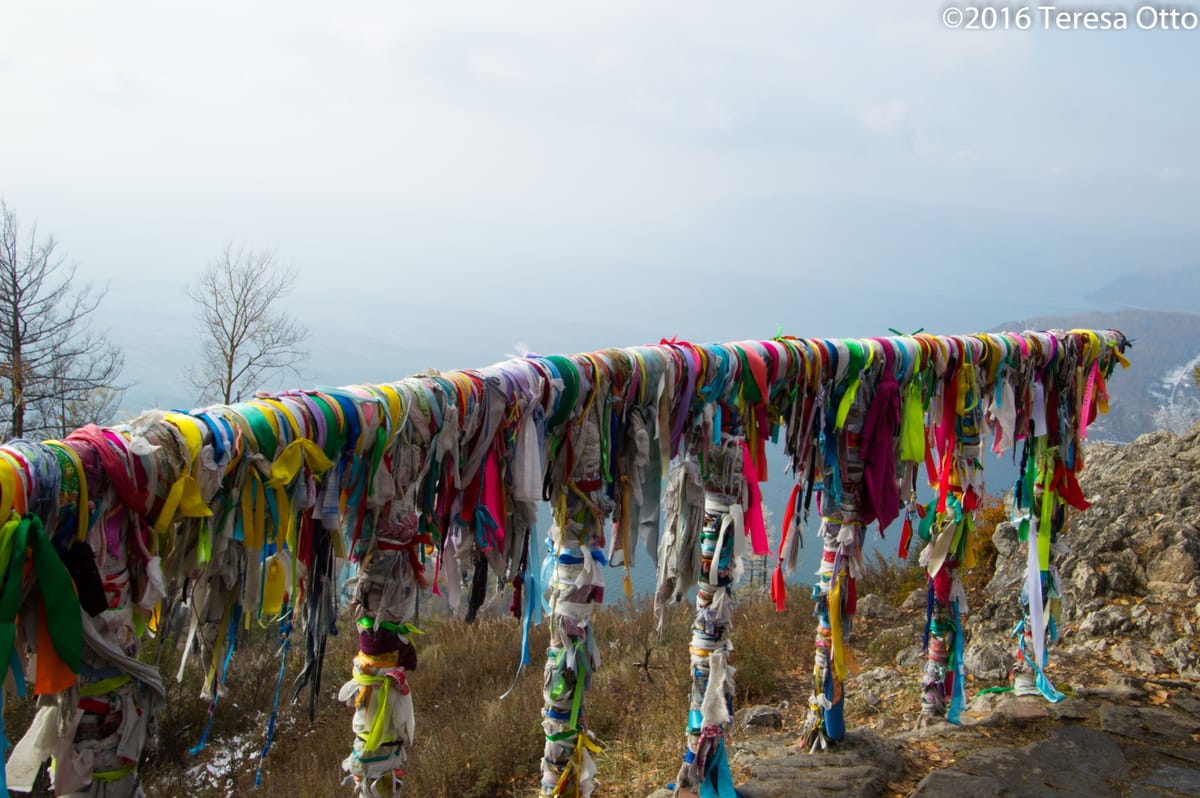
I didn’t expect to shed my coat on the switchback trail half way up the mountain. It was October. And it was Siberia. It had snowed yesterday, but now the sun was peeking out and the weather glorious. We were on a mission. Four of us altogether, three Americans visiting Listvyanka, Russia and our knowledgeable, very fit and very patient local guide, Tanya.
Our Destination
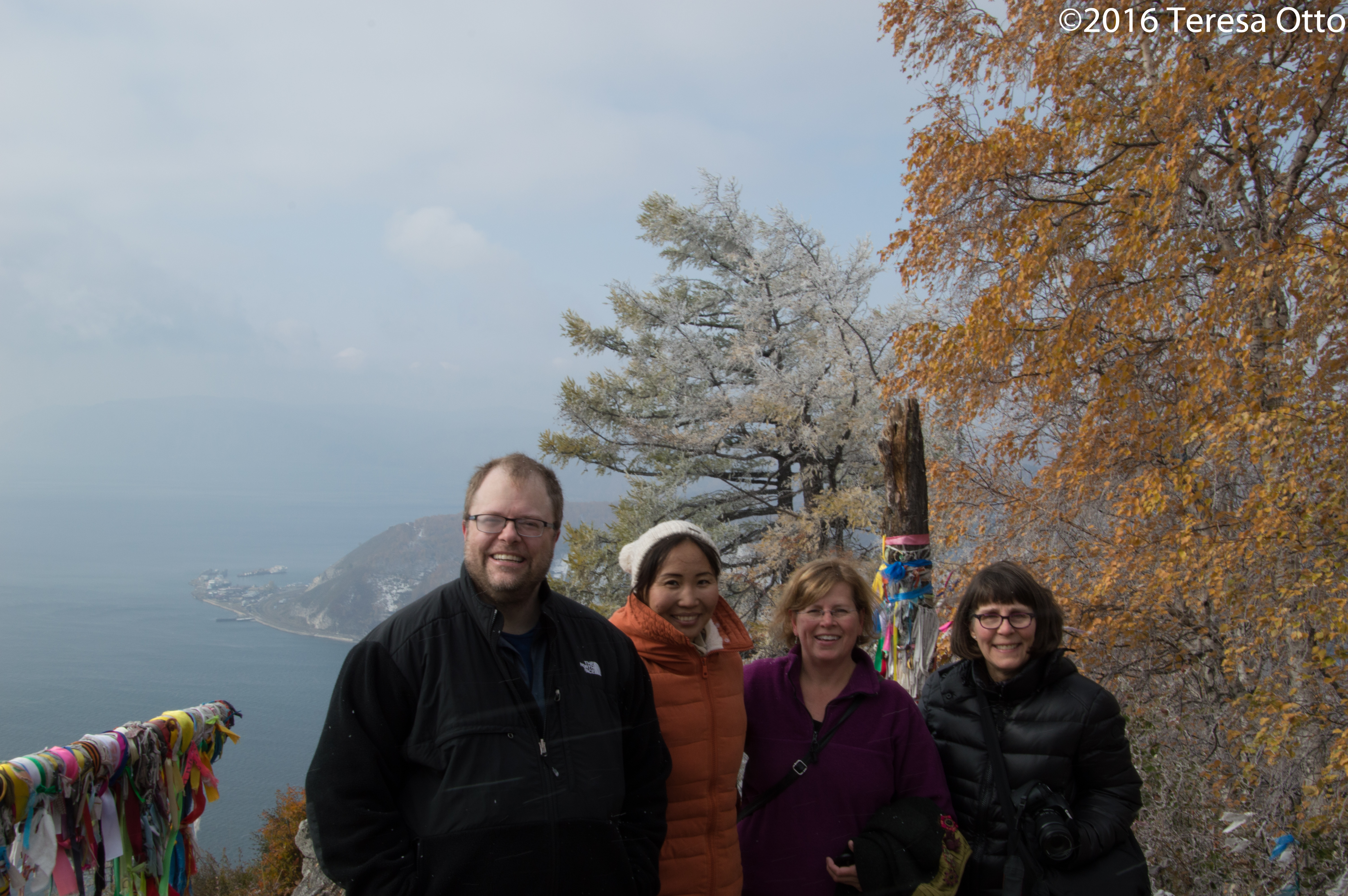
The goal – a cliff side vantage point called Chersky Stone with views of Lake Baikal, the Angara River and Shaman Rock. We planned to hop on the cableway, take in the mountain scenery on our assent and hop off at Chersky Stone. But it wasn’t going to be that simple.
It wasn’t just about the destination anymore. We embarked on a journey – one that took my breath away, literally and figuratively. You see, the chairlift to the top of the mountain was out of service. We would have to walk two kilometers one way and reach an altitude of 755 meters in the process. We briefly deliberated. It was unanimous – we would go for it.
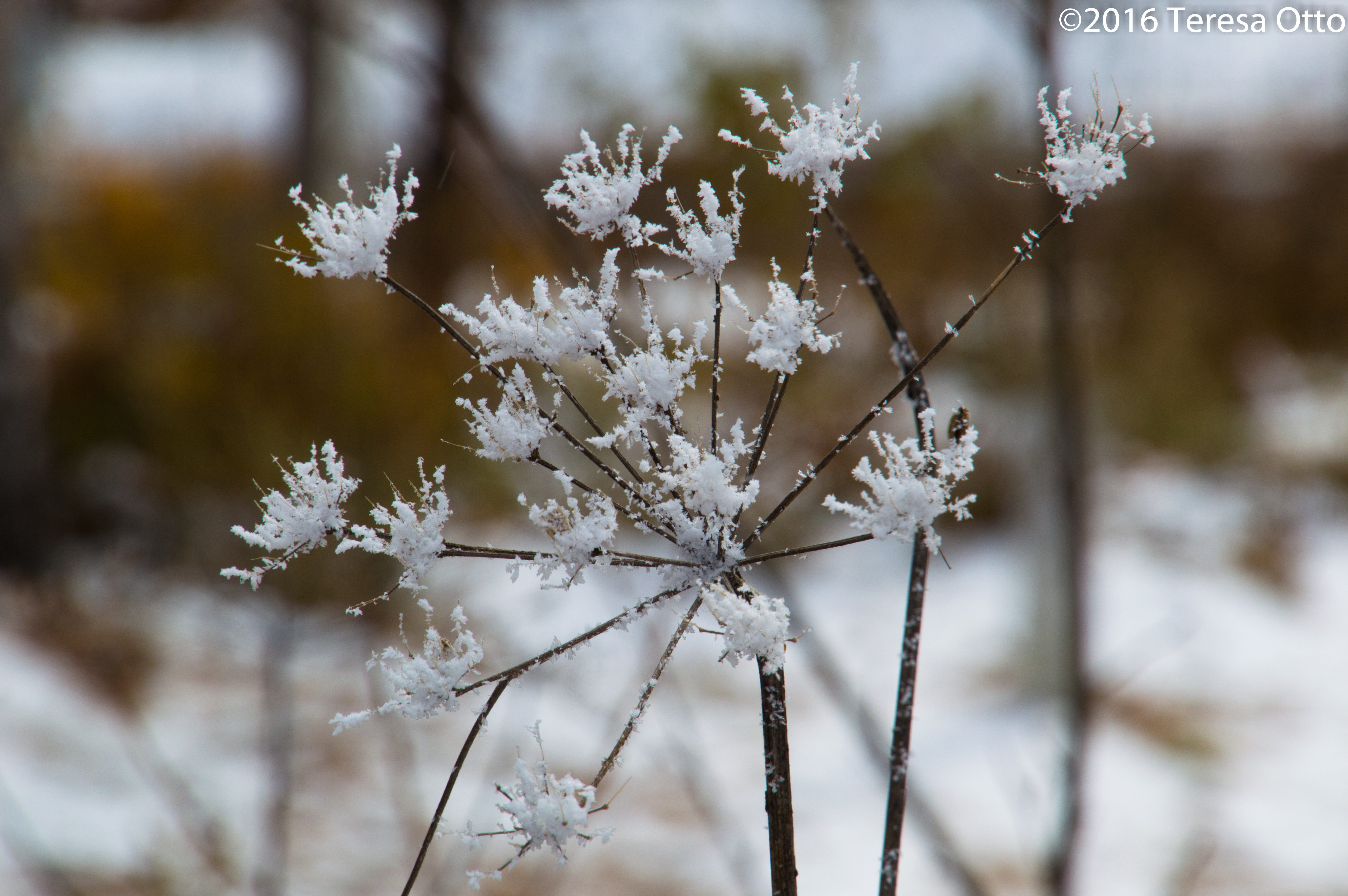
As with any journey, this one started with a single step. Hints of the beauty to come revealed themselves to us from the very start. Remnants of a dried blossom dusted with snow, a dark gray feather with white stripes that I picked up and slipped into my passport for safe keeping, a ribbon tied to a tree fluttering in the breeze and stacked stones creating mini pyramids graced our trail.
Hundreds upon hundreds of birch trees with their glittery frosted tree limbs and white bark shimmered in the sunlight. Some trees bore orange leaves and others had brilliant red leaves clinging to their branches. Most leaves, already fallen, lay beneath a white snowy carpet on the forest floor.
One foot in front of the other. I peeled my jacket off. I fogged the view finder of my camera. Is anyone else getting hot, I ask? Am I really this out of shape? This had now reached trek status – I don’t sweat on a walk. We pressed on. And then it happened, the switchback road we so diligently climbed, ended.
The Reward
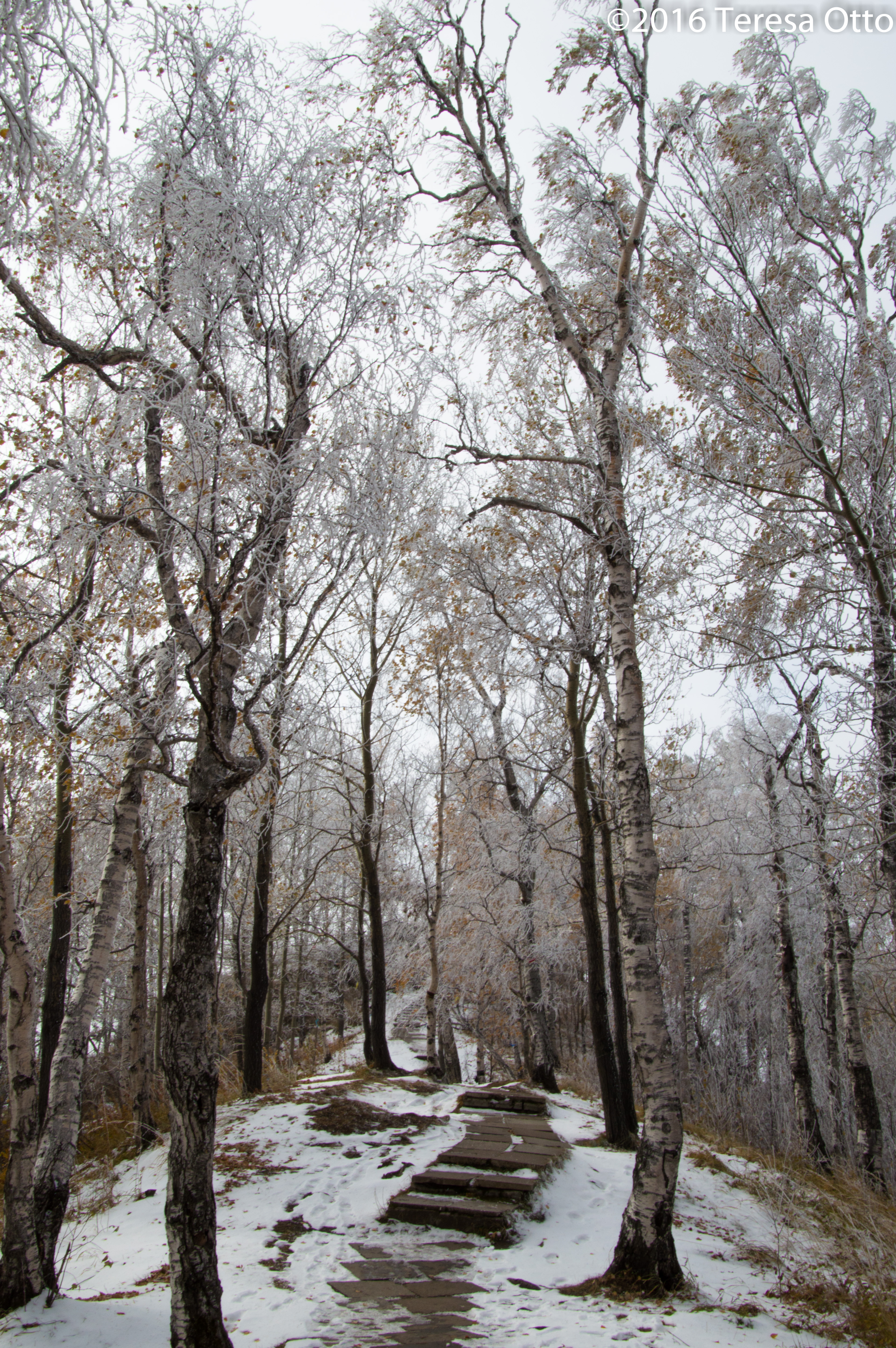
A narrow stone path split the forest in two with tall straight birch trees standing guard on each side.
A few more steps and we would reach Chersky Stone, the vantage point named for Ivan Chersky, a Belarusian-Polish explorer and self-taught scientist who mapped Lake Baikal first. He was exiled to Siberia after being on the losing side of the January Uprising in the 1860s.
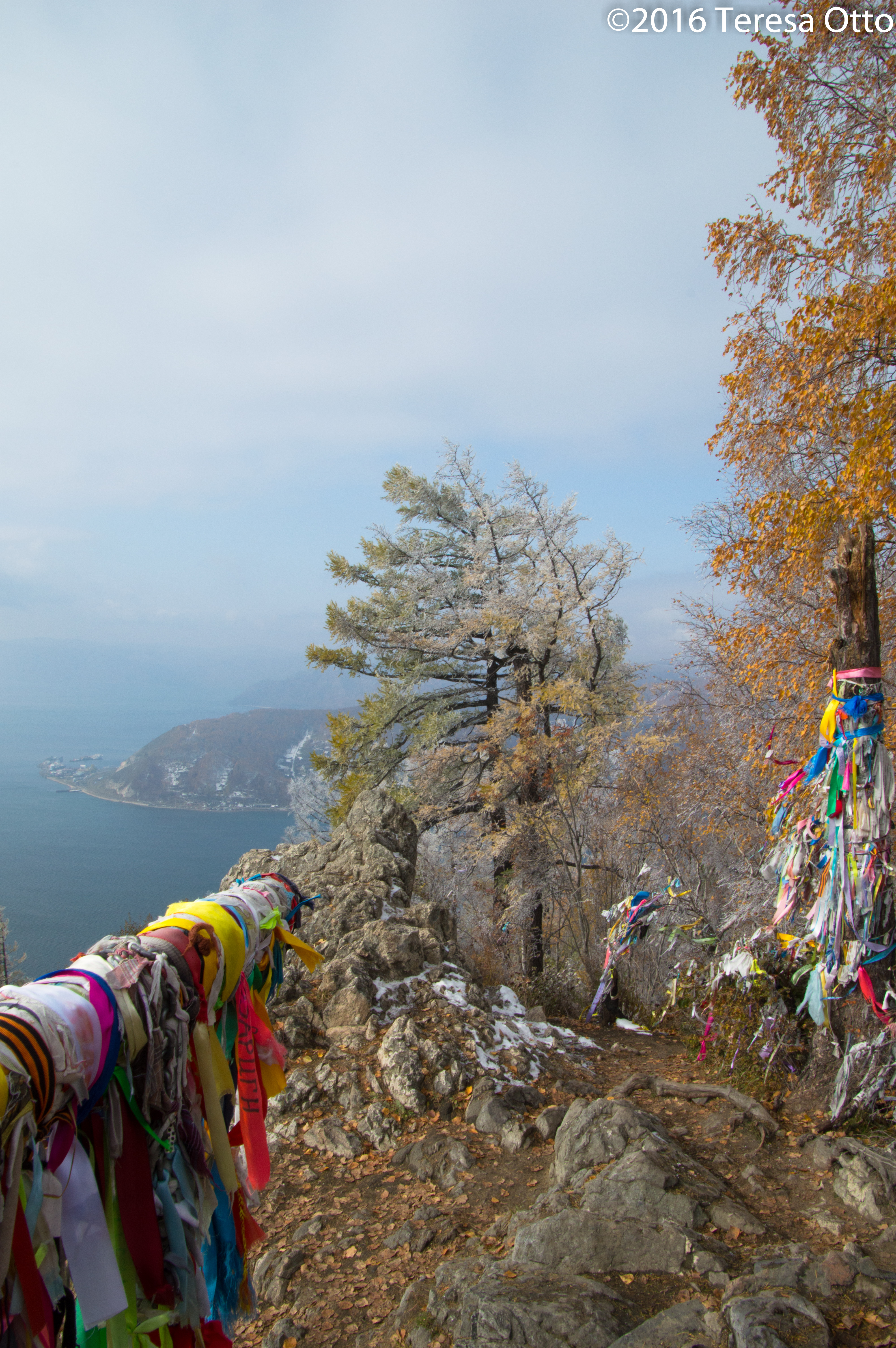
This vantage point was everything we’d been promised – an ethereal view of the deep blue gray waters of Lake Baikal in the distance. Where sky and lake met was hard to tell as mist blurred the lines. What was unexpected, though, were the hundreds of brightly colored satin ribbons tied around the overlook railing, around the trees and around a weathered, gnarled stump on the cliff’s edge.
Ribbons had been placed to symbolize the prayers of the Buryat people as part of their shamanistic tradition and by tourists who had the foresight to bring a ribbon along or didn’t mind tearing off a piece of their clothing to add credence to their requests. This was indeed a sacred place for the Buryat people.
Chersky Stone
Tanya educated us there on top of Chersky Stone, speaking about her people, the Buryats, who are the largest group of indigenous people in the area, numbering about 460,000 in Siberia. Traditionally, their religion was shamanism. And even though Buddhist monks arrived about 400 years ago and Buddhism was recognized as the official religion of the Buryats in 1741, shamanism and a spiritual connection to earth, wind, water and fire is common for all Buryats.
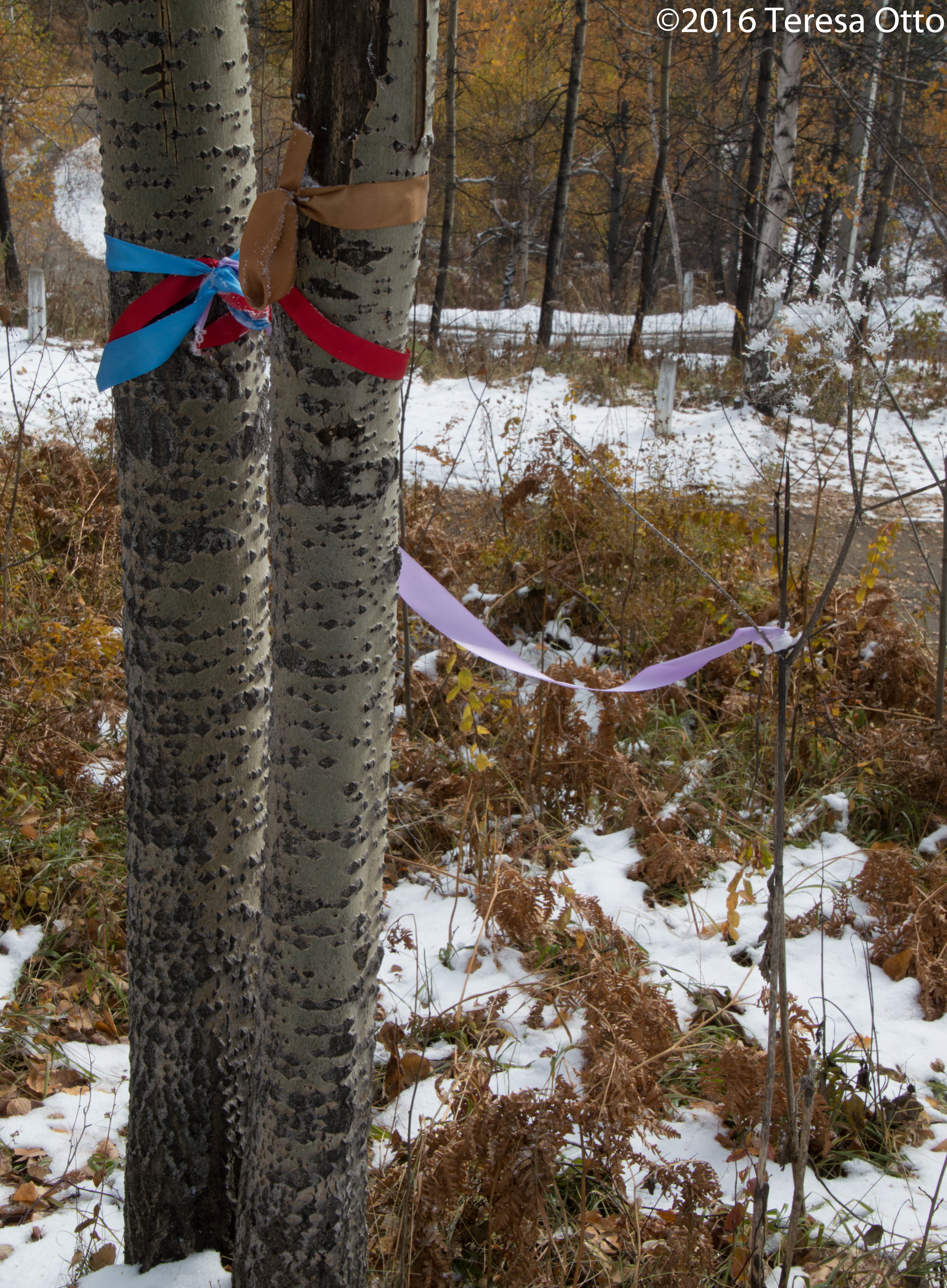
Whether fastening prayer ribbons to mark the spiritual significance of the place is in keeping with shamanism, an added dimension of local Buddhism practices or a connection to nature matters not. The practice of tying a ribbon or stacking stones to symbolize prayers says to all who enter, ‘this place is important, prayer is spoken here’. This spiritual place had no walls but a view that was unparalleled. It was obvious there on top of the world that there were lots of prayers, wishes and requests.
The Meaning of the Colors
Tanya then told us about the significance of the color of the ribbons. For the Buryats, white ribbons represent purity, a special color for the Buryats and the color of New Years – a time when the Buryats dress in white and eat white food, called milk food.
Blue ribbons signify harmony and calmness. Green ribbons are for change, fertility and renewal. Yellow signifies wealth, riches and abundance – red, love, power and might. Looking around, it seemed white and blue had overtaken all the others. Our humanity hoped and prayed for peace and harmony.
This provided food for thought on the walk down the hill. (Going up it was a mountain, going down a hill.) If I am able to return, I’ll choose again to walk to the top, take the time to reflect on the significance of being there and being present. I’ll bring a blue ribbon for tranquility, a red one for love, a green one for renewal and most importantly a white one for peace – I’ll bring a rainbow of ribbons to pray for the world and its occupants and I’ll celebrate being on top of the world, our world for a brief moment in time.
If You Go
Listyvanka Village is 70 kilometers from Irkutsck and is on the southern part of Lake Baikal. I highly recommend a tour with Tanya Tomitova of Baikal-Misha Tours. The tour can be customized depending on your time and interests.
Besides the must see Chersky Stone, most tours include a visit to the Baikal Limnological Museum which details the development of the lake and the flora and fauna that is unique to the lake. A visit to St. Nicholas Russian Orthodox Church, Listvyanka Village’s open air fish and trinket market and a meal serving delicious omul fish, found only in Lake Baikal, round out the day.




